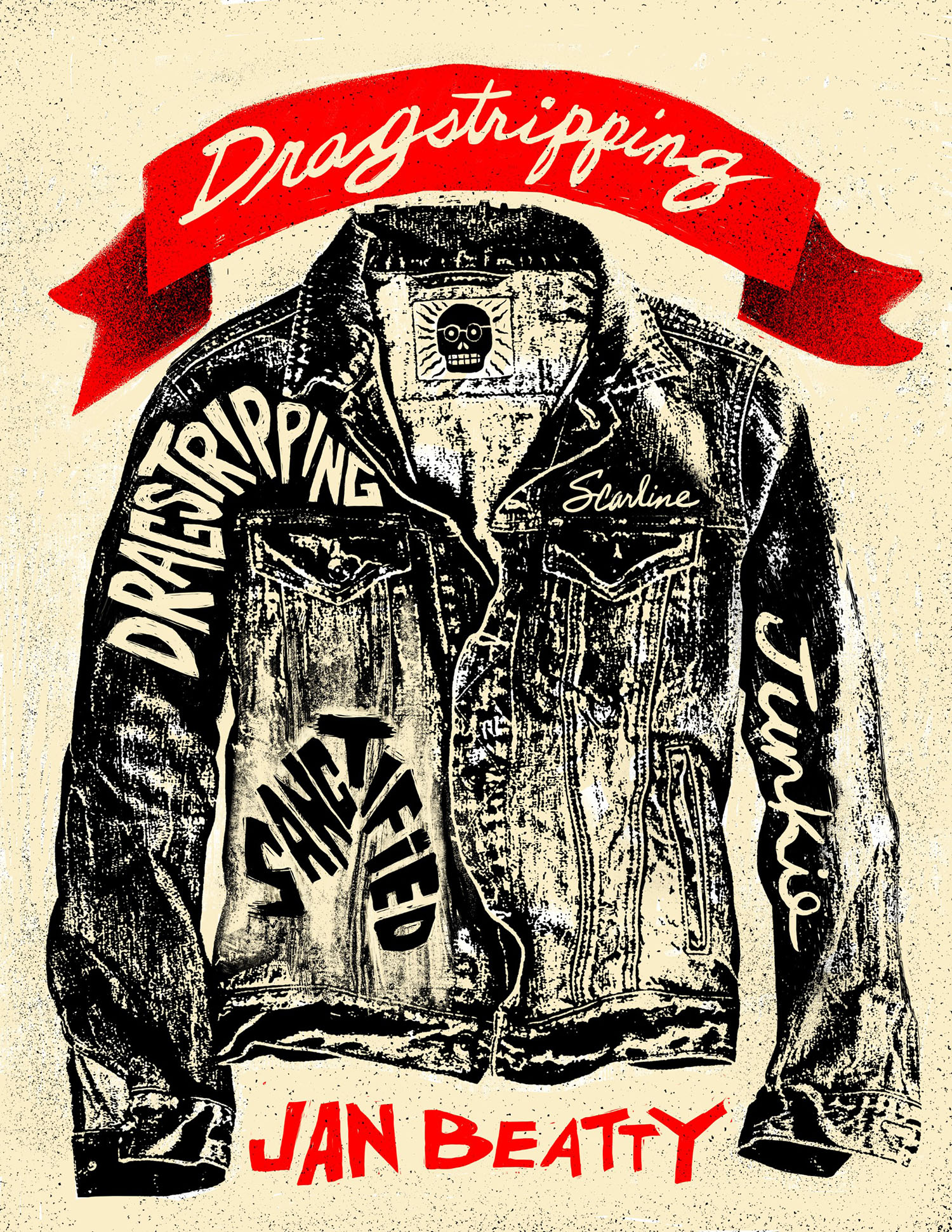Review of Dragstripping: Poems by Jan Beatty

Dragstripping: Poems
Jan Beatty
University of Pittsburgh Press, 2024, 112 pages
$18.00
Reviewed by Allison Quinlan
Jan Beatty’s Dragstripping explores identity, trauma, and resilience interwoven with self-discovery. The journey begins with “Sanctified,” a homage to Sister Rosetta Tharpe, setting the frank tone of the collection in her description of the nightclub scene: “real is real / that in the nightclub wailing and the strap-on guitars / there’s no happy ending / just the blues shouters / scorching / sanctified.” From there, she dives into what the back cover deems “the ecstatic after violence.”
Beatty’s Dragstripping draws on several meanings of drag and stripping, particularly concerning identity, the self, and body, while drawing on the imagery of drag racing. A dragstrip is a 402.33-meter stretch where races take place with burnt-out tires peeling toward the finish. In the poem “Drag,” Beatty thrusts readers into the depths of her childhood trauma, reviewing the moments where familial bonds frayed and her selfhood forged amidst adversity. She describes her time in an orphanage, the complicated relationship with her mother, and how families don’t make sense, given her life experiences, saying, “my heart’s dragstripped / from the shredded tires of predators.” Despite the trauma’s lingering, visible effects, she’s resilient. She challenges the reader to “throw the red flag down” and watch her overcome all expectations in the face of life’s challenges as she flies down the track towards the finish line.
Early in the collection lies “Dragstripping,” a reflection on desire and self-discovery, which I consider the heart of the collection thematically. This piece plays into “drag” and “stripping” in a way that may be more familiar to queer folks less keen on cars. Beatty writes about their experiences with a stripper and the complication of (what I perceived to be) gender. She says, “I couldn’t even say what she had / but I wanted it.” In the poem’s conclusion, Beatty comes to understand and explain finding exactly what she wanted. In this poem, the author navigates the complexities of desire and longing, focusing on the divided self.
The divided self is a recurring theme within Dragstripping, and the author passionately celebrates what she often calls the “split.” “Some people say that half isn’t anything / but it will drive an ocean back / to the center,” she notes. In “Scarline,” she further confronts the fractured nature of her identity. Yet, amidst the fractures, there is a fierce determination to reclaim agency and autonomy. In “I Ran into Water,” Beatty grapples with the confines of the body, seeking liberation in defiance of societal norms. The imagery of “striker boots” and “heel irons” speaks to a defiant spirit, unapologetically carving out space in a world that seeks to confine and define.
Dragstripping is a testament to poetry’s power to excavate the depths of human experience. Beatty’s work invites readers to witness the complexities of identity and resilience after trauma.
Allison Quinlan (they/she) volunteers for Sinister Wisdom. They manage a nonprofit in the UK and ghostwrite part-time. Their research appears in The Journal of Intersectional Social Justice, and their ghostwriting appears in The Independent, Solicitors Journal, and City A.M.
"Empowerment comes from ideas."
― Charlene Carruthers
"Your silence will not protect you."
— Tourmaline
"Gender is the poetry each of us makes out of the language we are taught."
— Leila Raven


